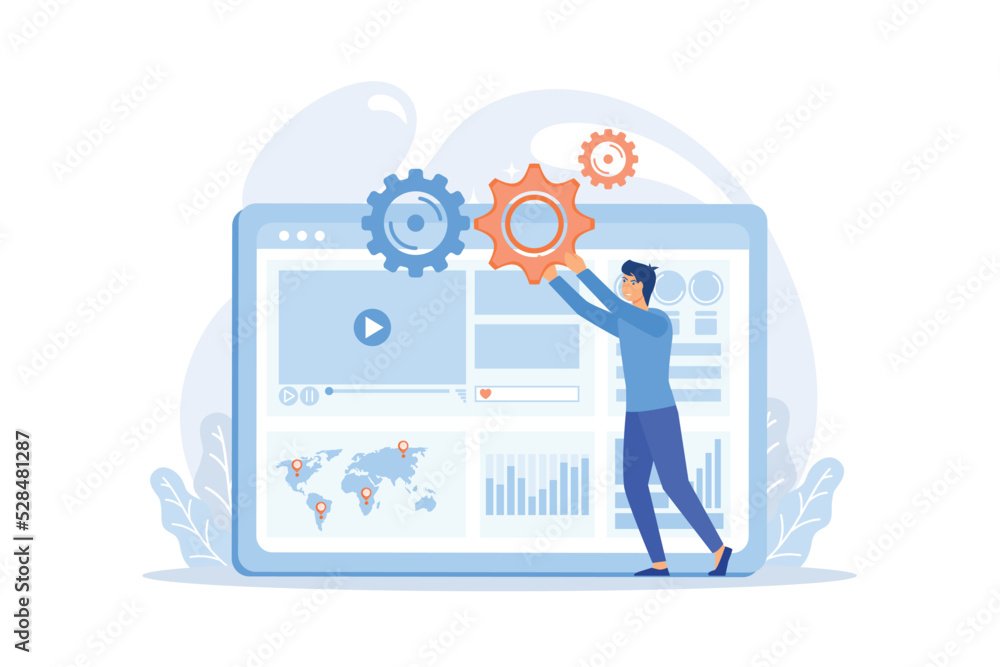
On page Optimization is what is done inside a website to rank the website. It’s essentially making your website more attractive to both search engines and users. This can only be done by a webmaster or someone who has access to the backend of a site.
Benefits of On page Optimization
- Improved Search Rankings.
- Better user experience.
- Increased organic traffic.
- Establishes your website as an authority on a topic.
Sections of On page Optimization
On page Optimization has two sections. They are given below.
1.Head Section Optimization
A crucial part of On page Optimization. It contains vital information that helps users to understand your page’s content and relevance to search queries.
Snippet
- Each and every result in SERP (Search Engine Page Result) is called Snippet.
- A short Summary of a Website.
Structure of Snippet
- URL(Uniform Resource Locator)
- Title
- Description
Types of Snippets
Basic Snippet
–URL
–Title
–Description
Rich/Advanced Snippet
–URL
–Title
–Have additional Information[Ratings, links etc…]
Featured Snippet
–Description
–URL
–Title
- Result Shows in zeroth position.
Snippet Optimization
1.URL Optimization
> Our URL must be simple & short.
> URL should be Unique.
> Use only small letters.
> URL should not contain any spelling or grammar mistakes.
> Avoid special characters.
> URL should be relevant to the content.
> Use hyphen (-) to separate words in a URL.
> Do not use spaces or underscores in it.
2.Site Title/Meta Title Optimization
> Title should be within 55-60 characters or 580 pixels.
> Title must contain keywords.
> It should be simple, unique and impressive.
> No spelling or grammatical mistakes should be there.
> Do not use full capital or full small letters in the title.
> Minimum 3 words preferred.
> Don’t use more than one H1 tag.
> If the title is missing or misleading, Google will take the appropriate one
From the content.
3.Meta Description Optimization
> Description within 155-160 characters or 920 pixels.
> Description should be simple, unique and impressive.
> No spelling or grammatical mistakes should be there.
> Description must contain keywords.
> For articles, blog and news we should limit the description
To 150 characters.
2.Body Section Optimization
Other crucial part of On page Optimization. It’s where you display valuable content to your audience and where search engines access your page’s relevance to user search. Optimizing this section is crucial for improving search engine rankings and elevate user experience.
1.Content Optimization
> Content should be natural [Avoid AI contents].
> Content should be engaging and informative.
> Content should be unique.
> Use active voices rather than passive voices in the content.
> No spelling or grammatical mistakes should be there.
> Split the paragraphs into smaller ones.
> Use simple language.
> Proper keyword placements are needed in the content.
> Avoid keyword cannibalization.
> Minimum 700-800 words should be there.
> Use the keyword 10 percentage in starting time.
> Avoid keyword stuffing.
>Use LSI ( Latent semantic indexing) keywords.
> Content should be structured [Heading, multiple heading, paragraphs, image/videos].
> Don’t use more than one H1 tag.
> Include keywords in the H1 tag.
> Add at least one internal and external link [Do Follow].
> Keyword density should be 1 to 2 percentage.
> Content should be having rich media.
2.Anchor text Optimization
- Clickable text and visible text are called Anchor text.
Types of Anchor text
- Exact anchor text – Using our keyword as anchor text, For getting backlink.
- Partial anchor text – Give link in LSI keywords.
- Branded anchor text – Give link from brand name.
- Generic anchor text – Give link from a term that can be used equally for all businesses. eg: Learn more, click here.
- Use relevant anchor text.
- Avoid over usage of Exact and Generic anchor text.
3.Image Optimization
> Use relevant images.
> File size of image less than 100kb.
> Use quality images.
> Image shouldn’t have file names like 001, image, download etc…
> File should be renamed. Separate words using hyphens (-) in the file name.
> File name should be relevant to the image.
> Convert images into WEBP or JPEG format.
> Use alternative text for images.
> At least one image should have a keyword as alternative text
> Don’t overuse the keyword in alternative text since it will lead to keyword stuffing.
.
.
.
.
